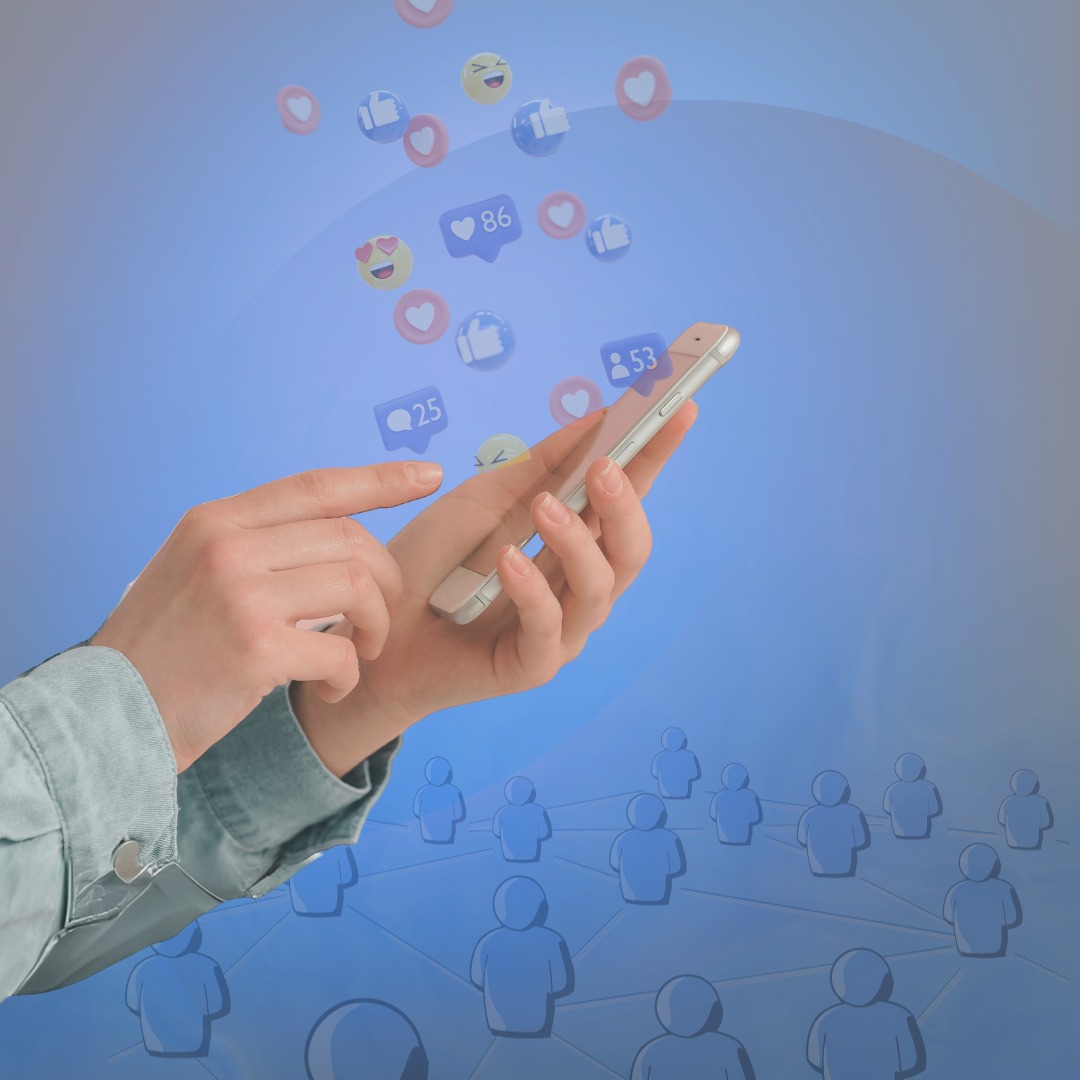
By Alan Cunningham
Edited by Muhammad Hani Ahsan
Graphic by Norie Wright and Arsh Naseer
Abstract: Misinformation is a growing problem in societies all across the globe, from the United States to South Africa to India, being promulgated and amplified by individuals invested in local politics and by foreign intelligence entities intending to manipulate a foreign nation for their interests. More often than not, given how powerful social media is in bringing people together and communicating ideas, memes, and images are far more powerful than words or articles in conveying information. Misinformation through memes and images is a powerful weapon and can change the minds of individuals far faster than any other kind of media. In exploring this phenomenon, this work analyzes The Free Thought Project, a U.S.-based Anarcho-Capitalist website that often publishes false news and has a prominent social media presence, producing thousands of memes. This work also interviews the website’s former chief social media manager and gains a special, unique insight into how memes containing misinformation are produced and implemented to draw in all sides of the political aisle. In halting this kind of misinformation, a joint effort is required on the part of the government, “Big Tech” companies like Twitter, Meta, and Reddit, and the citizens in fortifying themselves from misinformation and becoming media literate.
Images and video are among the most powerful tools in changing society’s mind. In a court of law, video evidence can be incredibly powerful and damning.1 In society, a film can change2 an entire generation’s point of view on a historical event and it can be hundreds of times more powerful than a book or other written word on the subject. There is a clear reason why General Dwight Eisenhower decided to record the atrocities of the Holocaust by Nazi Germany on film.3
In this increasingly digital age, ever since the 20084 and 2012 U.S. Presidential Elections5, social media has become one of the most powerful tools for any political organization, party, official, or campaign.
Knowledge at Wharton, a business journal of the Wharton School of Business at the University of Pennsylvania, wrote, “Social media has changed the game, allowing incumbents and newcomers alike to speak directly to constituents on everything from policy to what they had for dinner”. In contrast, the academic, peer-reviewed journal Management Science found “that political newcomers can get a substantial boost in support by using social media channels, which cost next to nothing and are easily tapped by anyone with an internet connection”.6
Social media (from Facebook, Twitter, TikTok, and Instagram) all allow for the easier and faster transmission of ideas, but also for misinformation and disinformation. One of the newest ways in which misinformation has spread has been through memes.
Memes and Misinformation
A meme is defined as “an amusing or interesting item (such as a captioned picture or video) or genre of items that is spread widely online, especially through social media”.7 Memes are a staple of online and internet culture, being a way to convey information or often mock a particular event or figure, contemporary or historical. Hundreds of groups and communities on Twitter, Reddit, and elsewhere are designed to share memes and other such internet content. Other communities on the internet, which do not focus on memes specifically, still share such content.
Due to their proliferation, it is important to look at how this form of communication online can misinform the public.
According to Joan Donovan, a leading member at the Shorenstein Institute of Harvard’s Kennedy School of Government, memes have been used extensively to destabilize and misinform. She writes,
“Russia used memes and other social-media tricks to influence the US election in 2016, using a troll farm known as the Internet Research Agency to seed pro-Trump and anti-Clinton content across various online platforms … In 2016, a Reddit message board, r/The_Donald, was a well-known meme factory for all things Trump. Imagery and sloganeering were beta-tested and refined there before being deployed by swarms of accounts on social-media platforms. Famous viral slogans launched from The_Donald included those having to do with “Pizzagate” and the Seth Rich murder conspiracy” nearing the close of her article by stating “Memes online make hoaxes and psychological operations easy to pull off on an international scale.”8
Memes at first, to a large degree, were solely for making people laugh, however, with the 2016 U.S. Presidential Election, memes became highly politically charged with persons creating memes that prescribe to their own political beliefs be they Liberal Democratic, Right-wing Republican, or Anarcho-Capitalist. This has only grown with the Trump administration and various political events including the continuing rise of QAnon in society, the ongoing COVID-19 pandemic,9 the January 6th insurrection at the Capitol10, and the war between Russia and Ukraine11. The proliferation of misinformation via memes has continued to increase, helping foreign powers and threats obtain their geopolitical goals.
The media intelligence research firm Zignal Labs conducted a study on how memes proliferate misinformation in 2021. Axios reported that “The data shows that a single meme, first circulated late last December, has helped to drive thousands of new mentions of a conspiracy tying the COVID-19 vaccine to 5G”12 describing how text over the meme template equates microchip architecture to the COVID-19 vaccine. The study also iterates that “Most of the misinformation researchers encounter on social platforms features media that manipulates content, like memes.”13
In many ways, memes are some, if not the, most powerful weapons in use for the information war. In the 2017 House and Senate Intelligence Committee hearings in which Google, Facebook, and Twitter’s general counsels testified, all of the examples of Russian disinformation provided were in the form of memes,14 nothing else.
Yet, when Mark Zuckerberg testified to the Senate Commerce and Judiciary Committee hearings in 2018, memes were not discussed. Ben Nimmo, a national security analyst at the Digital Forensic Research Lab of the Atlantic Council, said, “If you look at what the Russian troll factory was doing, a lot of it was not paid posts … it’s missing that substantial part of the equation.”15
Memes are an issue to American national security and sowing discord. But, one of the most serious offenders and greatest proliferators in memes and misinformation is not a foreign power, but rather a domestic one; The Free Thought Project.
The Free Thought Project and Meme Warfare
The Free Thought Project is one of the most notable purveyors of misinformation via memes and other media imagery. While many are likely unaware of the organization, it is likely that anyone who has spent any time on social media sites like Twitter, Reddit, or Facebook has seen memes produced by the Free Thought Project. From right-wing to left-wing to libertarian and any in-between, their reach is vast and appealing to a broad swath of individuals.
Operating out of Louisiana, the organization has thousands of followers on its Twitter16 and Facebook17 pages and many of its posts include memes as well as articles.
Image 1.1-1.3: Three examples of memes created by The Free Thought Project and shared to their Twitter account, gained on 10 October 202218
As one can see, these are highly conspiratorial and directly targeted to a select group of people. The meme comparing Jeffrey Dahmer and Barrack Obama taps into both liberal and conservative outrage about involvement abroad in foreign wars or regime change. The meme on Dr. Anthony Fauci taps into anti-vaccination hysteria and a recurrent theme of finding corruption within all public figures. Finally, the meme implying that the Council on Foreign Relations (CFR) is at the center of multiple companies, government agencies, and international organizations targets those members across the political spectrum that believe in a larger (elite or foreign) power directly controlling the U.S. and global politics.
Not only that but in the case of Image 1.1, it also utilizes popular culture (the recent airing of Netflix’s true crime miniseries on Jeffrey Dahmer) to further lure people in.
Not only are these memes directly looking to entice certain individuals, but they also misinform or engage in fallacious thinking. Image 1.1 engages in false equivalence, having two directly opposed individuals (or arguments) appear equal when they are not.19 As well, with the specific meme comparing Dahmer and Obama, it finds equality in one item alone (that both individuals did something that resulted in civilian deaths), but ignores the rest of the circumstances (level of intent, responsibility) surrounding that event.
Image 1.2 is correct that Dr. Fauci did indeed see his net worth double during the COVID-19 pandemic. However, this meme then alleges this was the case because of alleged dirty deals made with pharmaceutical companies
Image 1.3 also lacks any kind of real, tangible evidence necessary to claim that CFR is controlling some (or all) of the world’s organizations, instead relying on more conspiratorial insinuation and fear of “globalists” to make the required connections.
In an interview with The Free Thought Project’s former social media and content manager, John, he testifies the reach these memes had was incredible. “The spread of memes was ridiculous,” he said, “[We used] a lot of original ideas found from individuals on the internet, took viral, topical memes and templates and remade them using multiple images and phrased them to fit our desired message … we took something that confirms [an individual’s] bias, placed it in a funny, snarky picture template and it would spread.”20
In a June 2022 article from the journal Psychology & Marketing, the authors, from various universities in Europe, Asia, North America, and Africa, study memes and how they are used in marketing campaigns, finding that “84% of millennials are influenced by user-generated content” and argue that the use of memes in advertising “generates a 30% engagement rate on social media.”21 The NYU Dispatch, a student-run publishing platform, further asserts that “memes have about 10 times more reach with 60% percent organic engagement.”22
Memes have an impressive reach, that much is clear, but when memes contain such harmful misinformation as they do with The Free Thought Project, they influence the populace far more than news articles, photographs, or videos. When such memes are even amplified by non-state actors, like Russia,23 then it can be a detriment to American democracy.
How Can We Protect against Misinformation via Memes?
The question we are left with is how are we able to combat misinformation online, be it from a domestic source aimed at increasing their financial value or a foreign power wanting to advance their geopolitical goals?
In most cases, a three-pronged approach is required that includes a coordinated and effective response from social media companies (“Big Tech”), the U.S. government, and individual citizens.
From a “Big Tech” perspective, the greatest difficulty in this fight will be in making media companies accountable.24 Roger Entner, the head of Recon Analytics, a telecommunications research and analytics firm, stated “We see so much misinformation because the platforms have no real interest in deterring it … there is no profit in deleting the misinformation and preventing provocateurs to post it” as social media companies profit from this kind of behavior.25
Simply put, there are many ways in which companies like Twitter, Facebook, and Google could work to ensure their social media platforms are not contributing to an event in which many individuals are being negatively affected and harmed by misinformation (the COVID-19 pandemic being a prime example). According to Chris Messerole, an adjunct professor at Georgetown University and foreign policy fellow at the Brookings Institution, during such a storm of misinformation, “Twitter could promote police or government accounts so that accurate information is disseminated as quickly as possible” and “also display a warning at the top of its search and trending feeds about the unreliability of initial eyewitness accounts.”26 Kristina Hook and Ernesto Verdeja, both professors at the University of Notre Dame, detailed their own multiple, similar recommendations for The Stimson Center. They wrote that social media companies should “Institute robust oversight mechanisms and empower staff to exercise decisional authority on flagging and removal” and also give a voice to digital literacy programs and initiatives to better help society recognize information threats.27
The solutions available here, while Messerole’s strictly involve Twitter, can easily be replicated elsewhere along Facebook, Instagram, and other social media platforms. This would at least allow misinformation to be halted in its’ tracks while not violating the respective company’s guidelines for moderation and content. Also, having an editorial team that is staffed by competent and educated employees as opposed to being outsourced to third-party entities who may not have an understanding of certain social or cultural phrases would be of great help in halting misinformation online.
From a government perspective, there are many avenues in which politicians can be able to better improve the halting of misinformation from infecting Americans. However, the government must be incredibly cautious to avoid the impression or appearance of limiting freedom of speech to ensure that an individual’s freedom of speech online and in public is not violated.
Darrell M. West, the Director of Governance Studies at the Brookings Institution, theorizes “Overly restrictive regulation of internet platforms in open societies sets a dangerous precedent and can encourage authoritarian regimes to continue and/or expand censorship.”28 West stresses that the U.S. government should “avoid crackdowns on the news media’s ability to cover the news” and “avoid censoring content and making online platforms liable for misinformation.”29
An article for the political/policy-based magazine Governing goes more in-depth into how the government can help combat misinformation, largely quoting a report created by the international non-profit think tank The Aspen Institute. By creating legislation that “would provide consumers with tax credits for their local news subscriptions and small businesses with credits for ads purchased in local papers”, establishing a fund to “expand access to reliable information by investing in libraries, school programs and other local institutions in underserved areas” while more broadly securing election processes by way of recurring funding and helping academics, non-profits, and other entities that work against misinformation and disinformation.30
Hook and Verdeja also advocate for government institutions to work with academia by funding research and developing “accountability policy toolkits” while also strengthening “international legislation and international agreements” to force tech companies to more quickly remove material and information that violates Terms of Service and utilize the immense lobbying powers of the government to coordinate global efforts.31 They also stress that governments be “mindful of too much direct government involvement.”32 These recommendations from The Aspen Institute, Hook, and Verdeja would create a robust government program that is not toothless and more aimed at collaboration across the board and would create a Silicon Valley atmosphere that is proactive instead of reactive.
These efforts would help incredibly in halting misinformation and ensuring that the government is kept at arm’s length from possibly infringing upon the rights of the individual while also making sure they are actively working to stop both domestic and foreign powers from spreading misinformation that can severely harm or injure another.
Finally, and most impactful, the final form of countering mis-and-disinformation will be from the citizenry. John, the former social media marketing chief for The Free Thought Project, commented on this heavily in an interview with him. He said that after seeing the Ukraine-Russia War, the corruption of the Trump administration, and the attempted coup on the 6th of January,
“I think it is now more important than ever, with the ongoing threat to democracy and the midterm elections coming up to counter mis-and-disinformation … Identifying mis/disinformation in many cases means being willing to challenge your own biases. If you see a headline you agree with, or that provokes an emotional reaction, be on guard. Always try to confirm what you read through multiple, various sources. Never assume something is true just because you want it to be true.”33
The individual will be the sole deciding factor in halting misinformation and disinformation online. What they choose to share online, to proliferate, will affect public discourse and the way in which Americans and individuals around the globe perceive the world around them. One’s perception is reality and if the perception is that Ukraine is a fascist and genocidal nation, that Syria did not chemically attack their civilians, and that the COVID-19 virus is a sham, then that is how people will react, vote, and take part in sociopolitical processes with a misinformed and dangerous mindset.
Conclusion
The government and social media companies can perform great work in halting misinformation, but without an informed or educated citizenry, these efforts will be for naught. Instituting literacy programs within schools would help substantially in allowing the next generation of policymakers, business leaders, and the average citizen to better understand the world around them and recognize misinformation when they see it online. For those who are working and are not in college or high school, this would put some of the responsibility upon them to educate themselves on what misinformation is, how to recognize their own biases and the writer’s or organization’s bias, and learn what information is true and accurate.
Naturally, most individuals, independent of schooling or some broader reason, will not take it upon themselves to do a further or more robust investigation. Most will continue to consume media the way the majority of the public does which is to read the headline and fill in the rest of the blanks themselves, allowing their biases to do the work for them. Yet, ensuring our youth are educated while also encouraging journalists to continue their work on exposing domestic and foreign misinformation and disinformation operations and telling the truth about a specific event will undoubtedly serve the populace better and will help generations to come.
Author’s Biographical Statement: Alan Cunningham is a PhD student at the University of Birmingham’s Department of History in the United Kingdom. He holds an MA in International Relations from Norwich University and a BA and BS from the University of Texas at Austin. He plans to obtain a Doctor of Jurisprudence and practice law and politics.
Any views, thoughts, and opinions expressed are solely those of the author and do not reflect the views, opinions, or official standpoint of any of the author’s affiliations, including educational institutions, past and present employers, or volunteer associations.
- U.S. Department of Justice, Office of Justice Programs, Bureau of Justice Assistance. 2016. Video Evidence: A Primer for Prosecutors. https://bja.ojp.gov/sites/g/files/xyckuh186/files/media/document/final-video-evidence-primer-for-prosecutors.pdf.
- Hornaday, Ann. 2021. “’JFK’ at 30: Oliver Stone and the lasting impact of America’s most dangerous movie.” The Washington Post. https://www.washingtonpost.com/arts-entertainment/2021/12/22/oliver-stone-jfk-anniversary/.
- Friedberg, Dr. Edna. 2021. “Eisenhower’s Foresight: Protecting the Truth of the Holocaust.” YouTube. https://www.youtube.com/watch?v=FkLhu5ELFMk.
- Smith, Aaron. 2009. “The Internet’s Role in Campaign 2008.” Pew Research Center. https://www.pewresearch.org/internet/2009/04/15/the-internets-role-in-campaign-2008/.
- “The Presidential Campaign on Social Media.” 2019. The New York Times. https://archive.nytimes.com/www.nytimes.com/interactive/2012/10/08/technology/campaign-social-media.html?_r=0.
- Pinar Yildirim. 2020. “How Social Media Is Shaping Political Campaigns – Knowledge at Wharton.” Knowledge at Wharton. https://knowledge.wharton.upenn.edu/podcast/knowledge-at-wharton-podcast/how-social-media-is-shaping-political-campaigns/.
- Merriam-Webster. n.d. “Meme Definition & Meaning.” Merriam-Webster. Accessed November 7, 2023. https://www.merriam-webster.com/dictionary/meme.
- Donovan, Joan, and Ken Mugrage. 2019. “How memes got weaponized: A short history.” MIT Technology Review. https://www.technologyreview.com/2019/10/24/132228/political-war-memes-disinformation/.
- Dahiya, Himanshi. 2021. “COVID-19 Misinformation | Memes Are Being Used To Push COVID Conspiracy Theories, Here’s How.” The Quint. https://www.thequint.com/news/webqoof/memes-covid-19-conspiracy-theories-misinformation-fake-news.
- Nawaz, Amna, and Lorna Baldwin. 2022. “How disinformation around Jan. 6 riot has downplayed violence, divided Americans.” PBS. https://www.pbs.org/newshour/show/how-disinformation-around-jan-6-riot-has-downplayed-violence-divided-americans.
- Rosenblatt, Kalhan, and Kat Tenbarge. 2022. “Ukraine war on TikTok clouded by memes, misinformation and propaganda.” NBC News. https://www.nbcnews.com/tech/tech-news/tiktok-ukraine-war-misinformation-propaganda-rcna18146.
- Fischer, Sara, and Alison Snyder. 2021. “How memes became a major vehicle for misinformation.” Axios. https://www.axios.com/2021/02/23/memes-misinformation-coronavirus-56.
- ibid.
- Reardon, Marguerite, Terry Collins, Richard Nieva, and Alfred NG. 2017. “Facebook, Twitter, Google say they’re committed to fighting Russian meddling.” CNET. https://www.cnet.com/news/politics/facebook-twitter-google-say-theyre-committed-to-fighting-russian-meddling/.
- The Washington Post. 2018. “Transcript of Mark Zuckerberg’s Senate hearing – The Washington Post.” Washington Post. https://www.washingtonpost.com/news/the-switch/wp/2018/04/10/transcript-of-mark-zuckerbergs-senate-hearing/.
- The Free Thought Project 2.0(@TheFreeThought2). 2019. X, April, 2019. https://twitter.com/TheFreeThought2?ref_src=twsrc%5Egoogle%7Ctwcamp%5Eserp%7Ctwgr%5Eauthor.
- The Free Thought Project 4.0. 2019. Facebook. https://www.facebook.com/tftp4.0/.
- The Free Thought Project 2.0(@TheFreeThought2). 2019. X, April, 2019. https://twitter.com/TheFreeThought2?ref_src=twsrc%5Egoogle%7Ctwcamp%5Eserp%7Ctwgr%5Eauthor.
- Wunderlich, Annelise. 2019. “False Equivalence: Why It’s So Dangerous | Above the Noise.” KQED. https://www.kqed.org/education/531972/false-equivalence-why-its-so-dangerous-above-the-noise.
- John (former chief social media marketing officer for The Free Thought Project) in discussion with the author, 15 October 2022.
- Malodia, Suresh, Amandeep Dhir, Anil Bilgihan, Pranao Sinha, and Tanishka Tikoo. 2022. ““Meme marketing: How can marketers drive better engagement using viral memes?” Psychology & Marketing 39 (09). https://onlinelibrary.wiley.com/doi/epdf/10.1002/mar.21702.
- The NYU Dispatch. n.d. “How Internet Memes Became One of the Most Effective Digital Marketing Strategies Across Asia.” NYU’s WordPress. Accessed November 7, 2023. https://wp.nyu.edu/dispatch/how-internet-memes-became-one-of-the-most-effective-digital-marketing-strategies-across-asia/.
- Thompson, Nicholas, and Issie Lapowsky. 2018. “How Russian Trolls Used Meme Warfare to Divide America.” WIRED. https://www.wired.com/story/russia-ira-propaganda-senate-report/.
- Pazzanese, Christina. 2021. “Martha Minow looks at ways government can stop disinformation.” Harvard Gazette. https://news.harvard.edu/gazette/story/2021/08/martha-minow-looks-at-ways-government-can-stop-disinformation/.
- Suciu, Peter. 2019. “Spotting Misinformation On Social Media Is Increasingly Challenging.” Forbes. https://www.forbes.com/sites/petersuciu/2021/08/02/spotting-misinformation-on-social-media-is-increasingly-challenging/?sh=2013c8052771.
- Meserole, Chris. 2018. “How misinformation spreads on social media—And what to do about it | Brookings.” Brookings Institution. https://www.brookings.edu/articles/how-misinformation-spreads-on-social-media-and-what-to-do-about-it/.
- Hook, Kristina, and Ernesto Verdeja. 2022. “Social Media Misinformation and the Prevention of Political Instability and Mass Atrocities • Stimson Center.” Stimson Center. https://www.stimson.org/2022/social-media-misinformation-and-the-prevention-of-political-instability-and-mass-atrocities/.
- West, Darrell M. 2017. “How to combat fake news and disinformation | Brookings.” Brookings Institution. https://www.brookings.edu/articles/how-to-combat-fake-news-and-disinformation/.
- ibid.
- Pattison, Jule. 2021. “How State and Local Governments Can Combat Disinformation.” How State and Local Governments Can Combat Disinformation. https://www.governing.com/security/how-state-and-local-governments-can-combat-disinformation.
- Hook, Kristina, and Ernesto Verdeja. 2022. “Social Media Misinformation and the Prevention of Political Instability and Mass Atrocities • Stimson Center.” Stimson Center. https://www.stimson.org/2022/social-media-misinformation-and-the-prevention-of-political-instability-and-mass-atrocities/.
- Ibid.
- John (former chief social media marketing officer for The Free Thought Project), email message to author, 17 September 2022.






Very thoughtful and informative article. Identifies a significant problem that is both obvious and covert that heavily influences how people perceive issues that results in actions that might not the best.